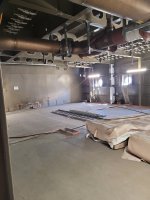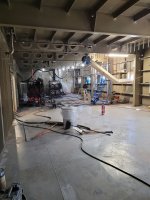- Reaction score
- 4,670
- Points
- 1,120
Canada hasn't been good at sub hunting since LCdr Woodburn was the XO on CHA in the 90's. No other Halifax class ship I've sailed on has had a Command Team that has paid proper attention to the time it takes to train and do ASW. Jets, missiles, high speed, go fast....that's where the excitement is, that's where they spend their time. Tail OPS at 24 knots...give it a try sometime. I've seen it in person. We spend more time launching and recovering the Array than we ever did with the tail wet and actually searching for something.
Jumping back to ammo - There's no reason we cannot use any of our ships to transport containerized munitions - from the MCDV to the AOPS to AST to the new AOR, and the coming CSC. All of them can transport sea containers. (A Halifax Class can too if you're willing to give up the flight deck...) That said - that doesn't mean it's a good idea to transport sea cans of ammo that way.
Also, there is very little about a ship's magazine spaces that make them any more safe the other compartments on ship - no extra armour for sure. That said, they do have automated sprinklers that are pretty good. A fitted firefighting system is all that really differentiates the 57mm mag from the dry provisions stores.
Jumping back to ammo - There's no reason we cannot use any of our ships to transport containerized munitions - from the MCDV to the AOPS to AST to the new AOR, and the coming CSC. All of them can transport sea containers. (A Halifax Class can too if you're willing to give up the flight deck...) That said - that doesn't mean it's a good idea to transport sea cans of ammo that way.
Also, there is very little about a ship's magazine spaces that make them any more safe the other compartments on ship - no extra armour for sure. That said, they do have automated sprinklers that are pretty good. A fitted firefighting system is all that really differentiates the 57mm mag from the dry provisions stores.









